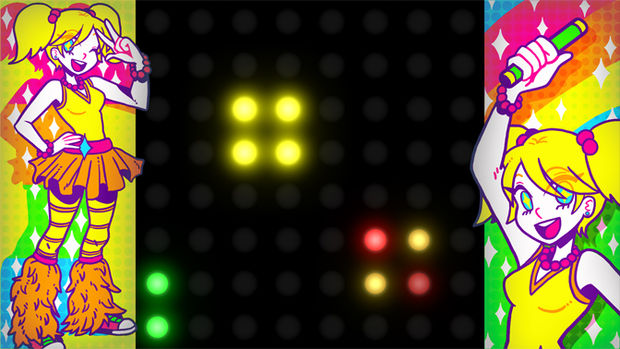A praiseworthy devotion to simple game design, audio and visuals capture the retro vibe perfectly
Unapologetic simplicity won't be for everyone, leaderboards would have been a nice addition
I have a theory that most truly brilliant games would still be great if you stripped them down to nothing more than pure gameplay. Take away all the glitzy graphics and superfluous trimmings until you are left with just the mechanics; in other words, the gameplay is ultimately what defines the game, and everything else is extra. Dot Arcade seems to be an effort to prove this theory.
Developers James Montagna and Andrew Lim have created an interesting little anachronism in Dot Arcade. In a world where people will launch into tirades when they learn a game will run at 900p instead of 1080p, these guys decided to see what could be done with a resolution of 64. Dot Arcade is a collection of three games that each operate on an eight-by-eight matrix of simulated lights, almost like handheld games from the ’70s that would have made the original Game & Watch titles look advanced. Choosing to shackle yourself to such a novel idea is definitely interesting, but there is always the risk of turning the idea into a gimmick. Thankfully, that risk is largely avoided.
The first game is Mr. Snake, a variant on the classic game Snake in which you start as a small line, or dot in this case, that grows as it eats dots that appear on screen, all the while trying to avoid its own body, which lengthens with each dot. Mr. Snake adds a twist to this formula by having obstacles that scroll down the screen that need to be avoided as well. These obstacles start as a few dots along the sides of the screen, but as time goes on the obstacles grow larger and start to appear in the middle as well. Ultimately, the point is to eat as many dots as possible before ultimately running into the obstacles or your body.
The second game, Dodge Club, is all about lasting as long as possible. Upon booting up this titles, you take control of a two-by-two square of yellow dots that has to move around the field while dodging another square, made of red and yellow dots, along with two green dots that circle around the screen. The major obstacle is the opposing square, which bounces from wall to wall like a Pong ball; it’s movements are predictable, but the limited scope of the play field still makes it rather challenging. Running into either obstacle ends your run.
The final game is Rally Driver, which casts you as a car, two yellow dots, driving along while avoiding traffic, presented as two blue dots. The left and right columns of dots are white and restrict your movement to the six columns in the middle. This game is probably the simplest as it only requires you to move left or right; however, the speed of the oncoming traffic does increase over time to prevent Rally Driver from being too easy.

Despite the ultra simple game design and graphics, the presentation in Dot Arcade is actually surprisingly pleasant. The actual game only takes up the middle chunk of the screen, so the developers used the real estate on each side to show some really cool, retro art that feels like it was lifted from the arcade cabinets of a long lost era. Similar art is also used on the game’s main screen where you select which game to play. The music on this screen is also great, with a fun, energetic vibe that feels totally appropriate for the game’s theme. Within the individual games, the music is limited to brief intro tunes, but all the sound effects are the bleeps and bloops you would expect from the games of the era that inspired them. Oh, and here is a fun little extra: holding down R or L on the game select screen will change to alternate art for each game and make the music sound even more chiptune-like.
Now, here’s the problem: this sort of game is amazingly difficult to review. Everything I described above really is the entirety of what Dot Arcade has to offer. Each game in the package is a simple, self-contained concept meant to be played over and over again to get a high score. One could use this as an excuse to mark the game down for being too limited or unambitious, but I can’t help but imagine the developers achieved exactly what they wanted to. Dot Arcade is a love letter to an era most gamers are too young to ever have experienced, and the amount of care the developers put into the mechanics, sounds, and visuals is obvious. So, if you demand a very modern experience from all your games, Dot Arcade will not be up your alley. For people who know what they are getting into and have a desire to taste a bit of the past, then this title is definitely worth checking out.
Nintendojo was provided a copy of this game for review by a third party, though that does not affect our recommendation. For every review, Nintendojo uses a standard criteria.




 ShareThis
ShareThis






